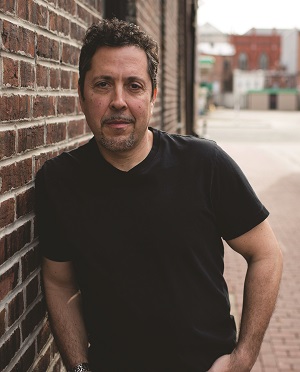Chronic Lymphocytic Leukemia Survivor
Healing & Control are the Foundation of This Survivor's Journey
 When Glenn Sabin received a chronic lymphocytic leukemia (CLL) diagnosis in 1991, treatment options were limited. The 28-year-old newlywed became motivated to do everything he could to position himself for a long, happy and healthy life. Today, his body shows no evidence of disease, and he devotes much of his time to motivating other CLL survivors.
When Glenn Sabin received a chronic lymphocytic leukemia (CLL) diagnosis in 1991, treatment options were limited. The 28-year-old newlywed became motivated to do everything he could to position himself for a long, happy and healthy life. Today, his body shows no evidence of disease, and he devotes much of his time to motivating other CLL survivors.
When I share my story, I always like to make it clear that the path I chose was based on available treatment options at the time. Today, CLL survivors in need of treatment are fortunate to have several targeted and highly effective therapeutic options. Had those existed when I was very sick, I absolutely would have jumped on them in a minute. Though my experience is not typical – I’m considered an outlier because of my body's unusual response to CLL – I feel my approach and the lessons I learned can apply to anyone facing cancer.
My life changed one day when regular blood work with my primary care physician showed an elevated white blood cell count, and he diagnosed the cause as chronic lymphocytic leukemia. He told me it was incurable and gave me a shocking prognosis of six months.
A hematologist confirmed the diagnosis after more tests and a
bone marrow biopsy. My spleen was significantly larger than it
should be. Four to five pounds of it were leukemic cells, so I underwent a splenectomy.
I was really young to have CLL, so my hematologist suggested I see a CLL specialist at a major cancer center. There were really only two treatment options available: watchful waiting and an experimental bone marrow transplant. My siblings weren’t a match for an allogeneic transplant, and the statistics on an autologous transplant were dismal, not to mention it would make me infertile. I wanted kids someday.
I opted for watchful waiting, which I soon renamed “proactive observation” because I intended to be in control of this disease. I was determined to be more involved in my own self-care by actively trying to be the healthiest version of myself physically and emotionally. I didn’t accept this diagnosis was a death sentence.
My wife Linda was my guiding light from the beginning. She felt confident CLL wouldn’t take my life. She immediately began researching. This was before the internet, so that meant going to a lot of bookstores and libraries.
We met specialists and learned about how I could put myself in a better position to be healthy. My goal was to turn my body into an environment that cancer didn’t want to live in. I focused on lifestyle changes that could improve my immune system and make me more resilient for when I’d need to begin active treatment. Together, we completely changed our diets and focused on the benefits of hydration, sleep, cardio and weightlifting, and supplements.
Twelve years later, in 2003, I began to feel the full force of the leukemia. I was very anemic, had a constant low-grade fever and woke up drenched from night sweats. My blood counts confirmed it. I consulted with my medical team, and they agreed it was time to discuss active treatment.
The treatment options had changed slightly since my diagnosis but still didn’t offer a cure. A dozen years after diagnosis, therapy was still given as a palliative approach. I worried that taking certain therapies might make me ineligible for potential novel treatments on the horizon. I refused immediate treatment, kept my oncologists in place, and continued with my healthy lifestyle. My medical team monitored me closely and, after 30 days, my blood counts were showing a positive trend, resulting in no evidence of disease seen on flow cytometry, and more than 50 percent reduction of CLL cells in my bone marrow.
I managed another relapse several years later in a similar manner. Today, I am free of disease, but am still monitored and glad treatments are available if I need them down the road. According to science, my result is basically impossible, but there are exceptional responders like me across many cancer types, who are able to overcome their conditions for inexplicable reasons. I’m very intrigued with this topic and am involved in research that is exploring it.
For many years, physicians would ask me to talk to their patients to provide peer-to-peer support. I have now formalized it and am an independent cancer coach (www.glennsabin.com).
Every counseling session is different because it depends on my client’s unique situation, but I have a few recommendations that apply to everyone:
- Get an accurate diagnosis from an academic expert in the field. That may mean getting a second or third opinion.
- Be sure you understand your exact diagnosis. There are several CLL subtypes, and it is rare that treatment has to begin immediately. This gives you time to explore your options and not rush.
- Focus on lifestyle changes. Maybe it’s a big change, like stopping smoking or giving up processed foods. Or it might be more of a pivot, such as exercising more regularly or increasing the quality of your sleep. Incremental changes can slowly become your new way of life.
I wanted to live a long, healthy and happy life, and I am. I also wanted to have kids, and we have two full-grown sons.
Linda and I are grateful. We have learned not to take anything for granted. Really, anything is possible.


